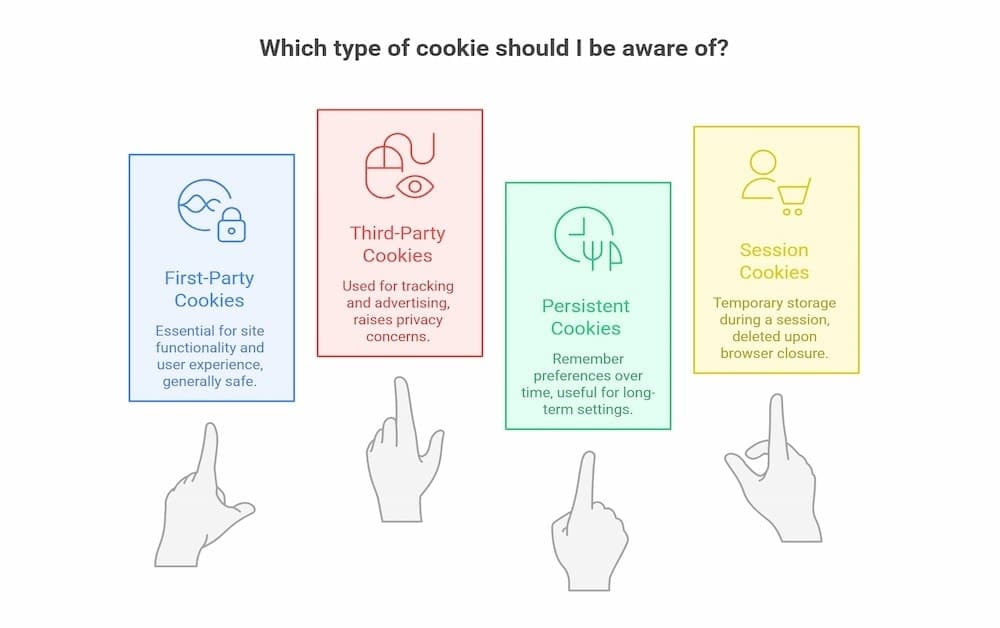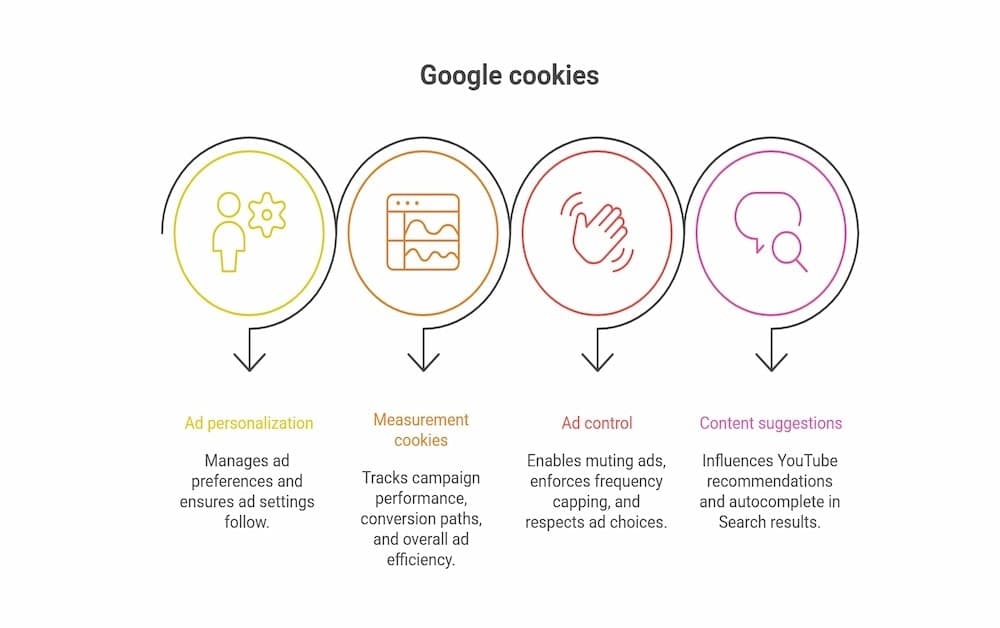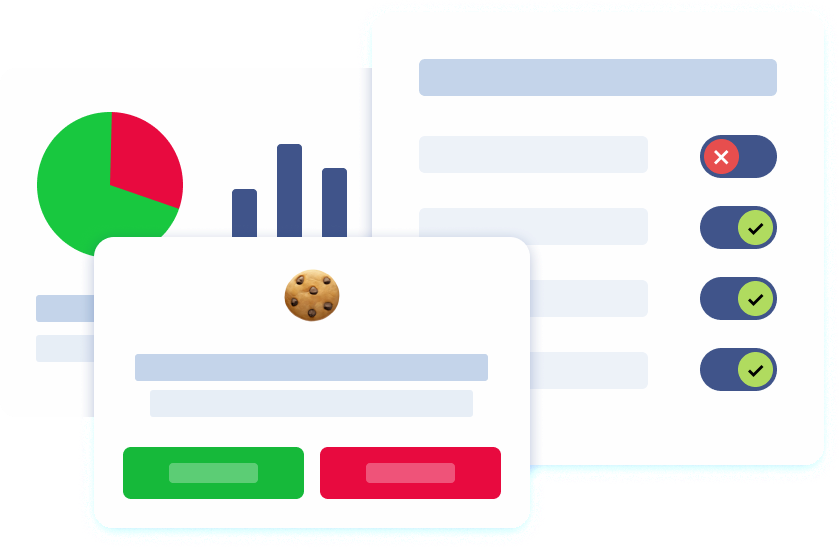Introduction
Cookies are small text files created by websites and saved in a user’s browser during a browsing session. These little files enhance your online experience, enabling sites to remember who you are, keep you signed in, preserve your user preferences, and deliver locally relevant content. Essentially, cookies enable websites to function properly.
Google uses cookies and similar technologies to remember vital information about your interactions, whether on Google Search, YouTube, or throughout the web. These cookies power everything from personalizing ads to maintaining site data, ensuring sites function correctly, and helping site owners collect data to improve website functionality.
However, cookies also raise privacy concerns. Some types can track user behavior across multiple sites, creating detailed profiles that impact user privacy. Understanding how cookies work and learning to manage cookies (including when to block third-party cookies, delete cookies, or clear other site data) is essential for balancing privacy and experience.
Types of Cookies
- Set by the domain you’re visiting.
- Enable essential and access features like staying logged in, remembering your preferred language, storing your preferences and site preferences, and powering functionality cookies.
- Generally stored as persistent cookies, staying active through multiple browsing sessions, or as session cookies, which expire when you close your browser.
- Third-party cookies
- Set by domains other than the one you’re on—often from ads, embedded content, or trackers.
- Used for targeted advertising, personalizing content, and tracking data across different sites.
- They raise privacy concerns since they can monitor user behavior across the web.
- Persistent cookies
- Remain in your browser even after closing the window.
- Help remember user preferences, login sessions, or saved preferences over time.
- Session cookies
- Exist only during an active browsing session and are deleted once the browser closes.
- Used for things like shopping cart contents, authentication, and other temporary data storage.
How Cookies Work
When you visit a site, a small file is sent to your browser, which stores data such as a unique ID or timestamp. On subsequent requests to that website, the browser sends back the cookie, allowing the site to recognize your device and retrieve stored information like user activity, browsing data, or rendering ads.
Cookies support a continuous user experience, maintain website functionality, and allow Google and other services to collect data on user behavior, enhancing personalized content and ad settings. Tracking cookies like those from Google Analytics, Google Ads, or Google Tag Manager collect insights into campaign performance, how users interact with pages, and overall user visits.
Google Analytics
Google Analytics is the standard tool for tracking and analyzing user behavior on websites. It uses cookies such as ga, gid, and _gat to collect information about user interactions with a particular service, session duration, and how often users return. Some analytics tools, including Google Analytics, use third-party cookies for tracking and advertising purposes.
- _ga is a persistent, first-party cookie that identifies unique users over a 2‑year lifespan.
- _gid tracks users over a 24‑hour period, offering short‑term session data.
- _gat functions as a throttling cookie, limiting the number of requests sent to Analytics servers.
Google Analytics 4 (GA4), Google’s latest iteration, continues this cookie reliance but enhances privacy by enabling first-party cookies by default and offering server-side tracking and machine learning for insights.

Managing Cookies
To manage cookies effectively and maintain user privacy, most browsers offer:
- Options to delete cookies, clear other site data, or block third-party cookies.
- Tools for site-specific preferences, so you can allow only first-party cookies while blocking third-party tracking cookies.
- Settings to clear cookies automatically when you exit your browser, reducing persistent tracking.
In your browser settings, you can allow or block third-party cookies, giving you control over which cookies are stored and enhancing your browsing experience.
Google Tag Manager (GTM) makes cookie control easier for website owners by allowing tags (like Google Analytics) to fire only after users give specific consent—a must for compliance with GDPR and other privacy regulations.
Managing cookies is essential for maintaining your privacy and security online.
Google Tag Manager
GTM provides a centralized interface to manage tags, including Google Analytics cookies. It supports consent-based tag triggering, meaning cookies won’t activate until user consent is granted.
- Simplifies cookie consent across regions, ensuring compliance with privacy laws like GDPR.
- Prevents unauthorized tracking by only firing tags once users give permission—helping maintain user trust.
- Offers audit logs for tag deployment, aiding in transparency and security.
Functionality and Security
Cookies aren’t just about tracking—they’re integral to the security and smooth operation of Google services. They serve multiple functions:
- Functionality cookies (e.g., NID, _Secure-ENID) remember language settings, SafeSearch filters, and shopping cart contents.
- Security cookies (SID, HSID) contain encrypted user IDs and session information, helping ensure authenticated sessions, authenticate users by verifying their identities, prevent fraud, and protect against cross-site request forgery, and often persist for up to 2 years.
- Additional cookies like AEC, pm_sess, YSC, and __Secure-YEC validate session integrity, prevent spam, and verify authentic user actions.
Cookie Usage by Google
Google uses a complex array of cookies to support its services and deliver insights:
- Analytics cookies: ga, gid, gat, VISITORINFO1_LIVE, __Secure-YEC, and mobile identifiers like the Google Usage ID.
- Ads cookies: NID, IDE, id, DSID, gads, gac, _gcl track ad performance, conversion, and personalization.
- Embedded content cookies: Examples include HSID, SID, APISID, SAPISID—used for YouTube embeds and Google Maps functionality.
These cookies help differentiate user visits, tailor personalized content, measure campaign effectiveness, and enhance user experience. Cookies also support product optimizations, helping to improve service performance and deliver better, more personalized features.
Advertising and Personalization
Google’s cookies power its advertising engine:
- Ad personalization: NID manages ad preferences; IDE and ID manage ads on non-Google sites; DSID ensures your ad settings follow you when logged in.
- Measurement cookies: gads, gac, gcl track campaign performance, conversion paths, and overall ad efficiency.
- Ad control: Cookies enable muting ads, enforce frequency capping, and respect your choices across ad settings.
- Content suggestions: Cookies like VISITOR_INFO1_LIVE influence YouTube recommendations and autocomplete in Search.
Some cookies also store location data (e.g., UULE) so that search results reflect your region.

Clearing Cookies
Removing cookies can improve privacy and resolve site issues:
- Deleting cookies will log you out of sites and remove saved preferences and site data. This can also affect your experience on other sites, as cookies are used across various online platforms to remember your settings and keep you signed in.
- Useful for fixing loading errors or clearing cached data.
- Most browsers offer settings to clear cookies on exit, block third-party cookies, or whitelist trusted sites.
- Support tools like Google’s Ad Settings portal allow you to mute ads or manage personalization.
Remember: clearing cookies may require re-entering login information or resetting preferences.
Alternatives to Traditional Cookies
To address evolving privacy concerns, alternatives to cookies are gaining traction:
- GA4 supports server-side tracking and machine learning data modeling—reducing reliance on cookies and complying with laws.
- Server-side tracking processes data on the server instead of the browser, improving data reliability and avoiding browser-imposed cookie limitations.
- Machine learning fills gaps when cookies are blocked, creating aggregated insights even with incomplete tracking.
- Tools like Analytify (for WordPress) simplify analytics without complex cookie setups, offering a non-GA4 approach to monitoring site performance.
Impact of Cookie Management
How you configure and manage cookies affects:
- User privacy: Blocking third-party cookies reduces tracking, while deleting cookies limits persistent tracking.
- Website functionality: Some mean deletion may degrade user experience or block site features like login persistence or embedded multimedia.
- Compliance: Proper cookie control is essential for regulations like GDPR, CCPA, and the ePrivacy Directive.
- Ad revenue: Blocking tracking cookies can impact ad personalization and reduce campaign effectiveness.
It’s vital to find a balance that maintains user privacy without sacrificing website convenience—a trust-building exercise for both site owners and users.
Best Practices for Cookie Management
- Regularly review and adjust your browser’s cookie settings.
- Block third-party cookies while allowing first-party cookies to maintain essential site functionality.
- Employ Google Tag Manager to trigger cookies only after user consent—a compliance best practice.
- Use Consent Mode along with GTM to adapt GA behavior based on consent.
- Explore GA4, server-side tracking, and machine learning to reduce dependence on first-party cookies.
- Keep updated with guides on GDPR and cookie consent, ensuring both compliance and SEO optimization.
Additional Resources
- Google’s Privacy Policy outlines how cookies protect information.
- Google Analytics Help Center covers GA cookies and user data collection.
- GTM documentation guides on managing consent via tags.
SEO Considerations
Incorporating keywords such as Google Analytics, third-party cookies, manage cookies, block third-party cookies, delete cookies, Google services, user preferences, tracking data, personalized content, Google Tag Manager, privacy concerns, and user privacy helps search engines understand your focus.
High-quality, informative, and accurate content improves ranking. Explaining how cookies work, how to manage them, and outlining privacy best practices ensures rich, user-oriented content that both readers and search bots value.
Conclusion
Google cookies—including first-party, third-party, session, and persistent cookies—serve critical roles in functionality, analytics, security, and advertising. While cookies enhance the online experience, they also raise privacy concerns, especially when tracking users across multiple sites.
Learning how to manage cookies—through browser settings, GTM, GA4, and Consent Mode—empowers users and site owners to protect user privacy without compromising website performance or ad effectiveness.
Properly managed cookies can still collect valuable insights, support personalized experiences, and ensure security while remaining respectful of user privacy and legal obligations.



